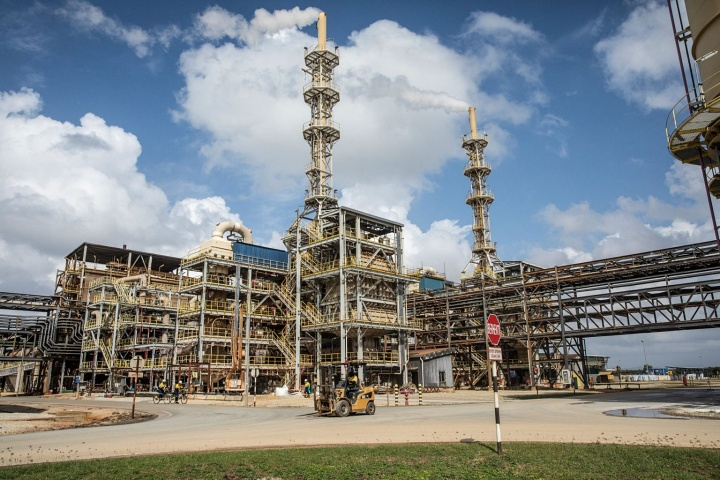Rare Earth Dominance on Three Fronts: China Tightens Control, U.S. Diversifies Supply Chains, Developing Nations in Play
Input
Modified
Beijing strengthens quotas, expands curbs to finished products
Washington scrambles to cut dependence on China
Resource diplomacy intensifies across emerging economies

China has introduced sweeping regulations to control every stage of rare earth production and exports, amplifying concerns over global supply chain instability. In response, the United States is accelerating efforts to build processing facilities and strengthen cooperation with allies to secure alternative supplies. At the same time, resource-rich developing nations in Africa and South America are leveraging the rivalry between the two powers to attract investment and infrastructure aid. Regulation, countermeasures, and diplomacy are now converging, turning the U.S.–China contest for rare earth dominance into a widening front in the global political economy.
New regulations to take effect in October
According to China’s state-run Global Times on the 25th, the Ministry of Industry and Information Technology (MIIT) and two other agencies issued guidelines on the 23rd for implementing the “Rare Earth Management Regulations,” announcing new rules set to take effect in October. The guidelines require all rare earth producers to report detailed monthly data on product flows to a government-controlled information system. The intent is to monitor quotas for designated companies and fully track distribution channels for rare earth products.
The Chinese government also introduced tighter controls on overall production quotas. Replacing interim measures in effect since June 2012, the new directive strengthens central authority over how annual output is determined and managed. MIIT and other ministries will set annual mining and refining quotas based on national economic development targets, rare earth reserves and types, industrial development needs, ecological protection, and market demand.
Beijing had already signaled last month that finished rare earth products would also be subject to regulation. Previously, restrictions mainly applied to raw ore or oxides extracted from mines, but the scope now extends to alloys, magnets, and components derived from them. Authorities plan to build a database to track exports monthly and scrutinize transaction records of companies in detail. Analysts see this not merely as an industrial regulation but as a tactical maneuver to strengthen Beijing’s hand in international disputes over rare earths.
Already supplying more than 70 percent of the world’s rare earths, China will now be able to adjust market volumes in real time. That power extends beyond limiting supply, giving Beijing the ability to strike directly at global electronics, battery, and defense industries. Since rare earths are indispensable for semiconductors, electric vehicles, and advanced weapons, China’s tighter grip is widely viewed as deepening systemic supply chain vulnerabilities.
U.S. ramps up response with public–private projects
As Beijing moves to weaponize rare earth controls, Washington is raising the stakes with large-scale investments aimed at diversifying supply. The U.S. government has allocated billions of dollars to expand domestic refining facilities slated to begin operating this year, with the Departments of Defense and Energy spearheading efforts to bolster both mining and processing capacity. Some states are considering reopening rare earth mines, coupled with relaxed environmental rules, to accelerate initial production.
Private-sector participation is also robust. Tech and defense giants such as Apple, Microsoft, and Lockheed Martin have joined as project partners, contributing capital and technical expertise. Apple and Microsoft are pursuing research into alternative materials to reduce rare earth demand in their electronics supply chains, while defense contractors are working to design new components that rely less on rare earth magnets. Such joint ventures, built on public–private cooperation, have become the centerpiece of America’s strategy to reduce reliance on China.
Washington is also expanding its network of overseas partnerships. Joint exploration and refining projects with resource-rich countries like Canada and Australia are intended to offset domestic shortfalls and secure stable supply lines. Some initiatives are already in pilot phases targeting commercial output next year, backed by joint investment funds to ensure financing. These multilateral collaborations are designed to spread international risk and chip away at China’s monopoly position.
Yet limits to the U.S. approach remain clear. Despite heavy spending and corporate engagement, America cannot quickly match China’s decades of accumulated refining expertise and economies of scale. Experts caution that while Washington’s speed-driven campaign may not eliminate dependence in the short term, it represents an unavoidable step toward long-term strategic autonomy. Ultimately, the success or failure of these projects will shape the U.S. position in the ongoing rare earth rivalry.

Developing nations step up resource diplomacy
The U.S.–China contest over rare earths is expanding into resource-rich developing nations in Africa and South America, where the battle for strategic minerals is intensifying. The United States, constrained by limited domestic mining and refining capabilities, has little choice but to pursue overseas resources aggressively, while China is moving to secure long-term contracts and expand stakes in foreign mines to protect its dominant position.
In 2023, Washington invested $258 million in Australia’s Lynas Rare Earths to build a refining facility in Texas. Lynas subsequently achieved success at its Malaysian plant refining dysprosium oxide, a heavy rare earth, demonstrating progress in supply chain diversification. The U.S. also launched the Minerals Security Partnership (MSP) in 2022 with 14 nations including Japan, South Korea, India, the U.K., and Australia, institutionalizing resource diplomacy. The network has since expanded to include resource holders such as the Democratic Republic of Congo, Kazakhstan, and Ukraine, broadening supply diversification efforts.
China, for its part, is reinforcing its existing overseas supply networks. China Rare Earth Group, the country’s largest producer, has begun full-fledged cooperation with Vinacomin, Vietnam’s top mining company, while last year it imported 57 percent of its total rare earth intake—44,000 tons—from Myanmar, a critical supplier of heavy rare earths. The South China Morning Post noted that Beijing is using a “carrot-and-stick” approach, offering technology transfer and resource access to some countries while applying export controls against geopolitical rivals like the U.S.
Developing countries are seizing this rivalry as an opportunity. The DRC has tied rare earth development deals to large-scale infrastructure and financial assistance, securing funding vital for its economic development. Kazakhstan is courting foreign investment into mining projects through resource partnerships, while Ukraine is highlighting strategic minerals, including rare earths, as part of its postwar reconstruction drive.
In this way, resource diplomacy centered on rare earths is emerging as a key battleground in global political economy. The U.S. is pouring unprecedented sums into multilateral cooperation to ease dependence on China, while Beijing is consolidating overseas resource dominance to maintain its supply chain leverage. For developing nations, this competition offers prospects for growth through investment and infrastructure packages, but also carries the risk of deeper dependence on major powers. The economic gains they secure could, over time, narrow their diplomatic flexibility—making them a critical variable in the unfolding U.S.–China struggle for rare earth supremacy.





















